#luis ciges
Text











Dante no es únicamente severo (Jacinto Esteva & Joaquim Jordà, 1967)
#films watched in 2023#Dante no es únicamente severo#Jacinto Esteva#Joaquim Jordà#Joaquim Jorda#Dante Is Not Only Severe#1967#Serena Vergano#Susan Holmsquist#sixties#Spain#Enrique Irazoqui#Romy#Luis Ciges#drama#experimental film#experimental cinema#fashion
145 notes
·
View notes
Photo

I went to an orgy after the concert, but I could only think of you.
Labyrinth of Passion (Laberinto de pasiones), Pedro Almodóvar (1982)
#Pedro Almodóvar#Cecilia Roth#Imanol Arias#Helga Liné#Marta Fernández Muro#Fernando Vivanco#Ofelia Angélica#Ángel Alcázar#Concha Grégori#Cristina Sánchez Pascual#Fabio McNamara#Antonio Banderas#Luis Ciges#Agustín Almodóvar#Ángel Luis Fernández#Bernardo Bonezzi#Miguel Fernández#Pablo Pérez Mínguez#José Salcedo#1982
15 notes
·
View notes
Photo




Arrebato (1979)
2 notes
·
View notes
Text
WHO CAN KILL A CHILD (1976, QUIÉN PUEDE MATAR A UN NIÑO?) – Episode 219 – Decades Of Horror 1970s
“I had a shotgun in my room, I grabbed it…but I…I didn’t do anything. No one in the village did a thing, do you understand? Because… who can kill a child?” That’s not a question you want to be the answer to. Join your faithful Grue Crew – Doc Rotten, Bill Mulligan, Chad Hunt, Daphne Monary-Ernsdorff, and Jeff Mohr – as they check out a legendary and infamous Spanish horror film, Who Can Kill a Child? (1976, ¿Quién puede matar a un niño?).
Decades of Horror 1970s
Episode 219 – Who Can Kill a Child? (1976)
Join the Crew on the Gruesome Magazine YouTube channel!
Subscribe today! And click the alert to get notified of new content!
https://youtube.com/gruesomemagazine
Decades of Horror 1970s is partnering with the WICKED HORROR TV CHANNEL (https://wickedhorrortv.com/) which now includes video episodes of the podcast and is available on Roku, AppleTV, Amazon FireTV, AndroidTV, and its online website across all OTT platforms, as well as mobile, tablet, and desktop.
A couple of English tourists arrive on an island where all the children have gone crazy and are murdering the adults.
Directed by: Narciso Ibáñez Serrador (as Narciso Ibañez Serrador)
Writing Credits: Narciso Ibáñez Serrador (screenplay) (as Luis Peñafiel); Juan José Plans [novel, El juego de los niños (The children’s game)]
Selected Cast:
Lewis Fiander as Tom
Prunella Ransome as Evelyn
Antonio Iranzo as Padre (the father)
Miguel Narros as Guardacostas 1 (Coastguard)
Marisa Porcel as Brit van der Holden
Luis Ciges as Enrique Amorós
Fabián Conde as Empleado (Employee)
Maria Druille as Niña que llora (credited as María Druille)
Niños (children): Lourdes de la Cámara, Roberto Nauta, José Luis Romero, Javier de la Cámara, Marián Salgado, Cristina Torres, Luis Mateos, Adela Blanco, Juan Carlos Romero, Julio Jesús Parra, Carlos Parra, Juan Antonio Balandín, Pedro Balandín
Who Can Kill a Child? (1976), is a politically incorrect title for a Spanish horror film on a difficult subject directed by Narciso Ibáñez Serrador. The film tells the story of a married couple expecting a baby who travels to a remote island off the coast of Spain for a vacation and finds it almost completely devoid of adults. WTF? WTF, indeed! The direction and cinematography are brilliant and the acting doesn’t miss a beat. The 70s Grue Crew, joined this episode by Daphne Monary-Ernsdorff (yay!), are simultaneously disturbed and impressed by this cult classic and think it deserves a wider audience… if you can take it!
TRIGGER WARNING: The movie begins with ten minutes of newsreel footage depicting the heartbreaking damage done to children by the actions of adults in wars. Many viewers will understandably want to skip this section.
At the time of this writing, Who Can Kill a Child? (1976) is available to stream from various YouTube links and is available from Mondo Macabro as a standard format Blu-ray disc.
Gruesome Magazine’s Decades of Horror 1970s is part of the Decades of Horror two-week rotation with The Classic Era and the 1980s. In two weeks, the next episode, chosen by Chad, will be Snowbeast (1977), a TV movie written by Joseph Stefano (Outer Limits, 1963-1965) and starring Bo Svenson, Yvette Mimieux, Robert Logan, Clint Walker, and Sylvia Sidney. It’s time for a good creature feature/big foot flick, but is this the one? Time will tell.
We want to hear from you – the coolest, grooviest fans: comment on the site or email the Decades of Horror 1970s podcast hosts at [email protected].
Check out this episode!
0 notes
Text


CALIFICACIÓN PERSONAL: 6.5 / 10
Título Original: Amanece, que no es poco
Año: 1989
Duración: 106 min
País: España
Dirección: José Luis Cuerda
Guion: José Luis Cuerda
Música: José Nieto
Fotografía: Porfirio Enríquez
Reparto: Antonio Resines, José Sazatornil, Cassen, Luis Ciges, Aurora Bautista, Enrique San Francisco, Pastora Vega, Chus Lampreave, Manuel Alexandre, María Isbert
Productora: Compañía de Aventuras Comerciales, RTVE
Género: Fantasy; Comedy
TRAILER:
dailymotion
0 notes
Text
Providing In-Depth Horoscope and Personality Analysis for May 10 Birthdays
They are not forceful or risky individuals, but rather they are unfaltering and firm: their fearlessness is solid. They will foster thanks to their own encounters and those of others. They are delayed to simply decide, and their perspective is consistently pragmatic and strong. Your brain is very free. They slowly ascend to the highest point of their beliefs, and that is the point at which they quit considering just themselves. The lacking person on this birthday is exceptionally pompous, dictatorial, and undeniably challenging to please. Notwithstanding that, his huge childishness empowers him to make material progress. With respect to the calling, they are magnificent in proficient cooking, horticulture, cultivating, and land. They additionally well as developers, vocalists, or specialists. Defect: They generally must have the final word. They are obstinate, unflinching, and imperious of character, qualities that become more unmistakable with age and industriousness. Loaded up with nobility and pride, they can be dependent upon risky interests and explosions of outrage. They are not liberated from the sensation of jealousy. What undermines them: They might go through deterrents and afflictions in their lives that influence their arrangements. What would it be advisable for them to desire? To assume command over her exotic nature, which is communicated with incredible power. Sicknesses: You can capitulate to mental despondency, and your body can show an inclination to heart conditions. Over the long run they can accomplish a decent position or have a decent profession, regardless of whether they come from a less fortunate foundation.
Providing In-Depth Horoscope and Personality Analysis for May 10 Birthdays
Assuming your birthday is on May 10, your zodiac sign is Taurus
May 10 - character and character
character: dauntless, flawless, curious, wild, adversary, saved; calling: physicist, review or, dressmaker; colors: olive, blue, dim; stone: diopside; creature: indulgent person; plant: poinsettia; fortunate numbers: 22,25,34,35,45,57 very fortunate number: 5
Occasions and observances - May 10
Pastorate Day
Mother's Day in: El Salvador, Joined Middle Easterner Emirates, Guatemala, India, Malaysia, Mexico, Oman, Pakistan, US, Qatar, Singapore, Chile.
World Day of transient birds
World Lupus Day.
Spain: Pastorate Day
May 10 Superstar Birthday. Who was conceived that very day as you?
1900: Cecilia Payne-Gaposchkin, English American cosmologist and astrophysicist (d. 1979). 1901: John Desmond Bernal, Irish-English crystallographer and physicist (d. 1971). 1901: Max Lorenz, German tenor (d. 1975). 1902: Anatole Litvak, Ukrainian-American producer, maker and screenwriter (d. 1974). 1902: David O. Selznick, American movie maker and chief (d. 1965). 1905: Mდ¡rkos Vamvakდ¡ris, artist lyricist, bouzouki player and Greek Rebetician performer (d. 1972). 1906: Benjamin Cid, Chilean legal advisor (f. 1990). 1909: Arturo Moreno, Spanish sketch artist and artist (f. 1993). 1913: Geoffrey Stagg, Spanish Hispanicist (d. 2004). 1915: Denis Thatcher, English military and finance manager, spouse of Margaret Thatcher (d. 2003). 1916: Milton Babbitt, American writer and instructor (d. 2011). 1918: Diva Diniz Correa, Brazilian zoologist (f. 1993). 1919: Eugenio Suდ¡rez, Spanish columnist and money manager (f. 2014). 1921: Luis Ciges, Spanish entertainer (f. 2002). 1922: Nancy Walker, American entertainer, artist and chief (d. 1992). 1923: Heydar Aliyev, Azerbaijani general and lawmaker, third Leader of Azerbaijan (d. 2003). 1923: Otar Korkia, Georgian b-ball player and mentor (d. 2005). 1925: Jaime Campmany, Spanish columnist and author (f. 2005). 1925: Juanita Martდnez, entertainer and Argentine vedette (d. 2001). 1925: Nდ©stor Rossi, Argentine footballer (d. 2007). 1926: Hugo Banzer Suდ¡rez, Bolivian military and despot (f. 2002). 1928: Arnold Rდ¼დ¼tel, Estonian legislator and agronomist, Leader of Estonia. 1928: Lothar Schmid, German chess player (d. 2013). 1929: George Coe, American entertainer and maker (d. 2015). 1929: Antonine Maillet, Canadian author and writer. 1930: George E. Smith, American physicist and specialist, Nobel laureate in material science. 1931: დ‰ttore Scola, Italian movie producer and screenwriter (d. 2016). 1932: Rodolfo Zapata, Argentine vocalist and humorist. 1935: Larry Williams, American vocalist, lyricist, piano player and maker (d. 1980). 1937: Tamara Press, Ukrainian disk hurler and competitor. 1938: Manuel Santana, Spanish tennis player. 1940: Arthur Alexander, American vocalist and lyricist of nation and soul (d. 1993). 1940: Wayne Dyer, American author and teacher (d. 2015). 1940: Vicente Miera, Spanish soccer mentor. 1941: Eric Barney, Argentine competitor had some expertise in shaft vault. 1942: Jim Calhoun, American b-ball player and mentor. 1942: Carl Douglas, Jamaican vocalist and musician. 1942: Fernando Gallardo, Chilean entertainer (f. 2004). 1943: Lucinda Worsthorne, English author, photographic artist, TV host and maker. 1944: Jim Abrahams, American movie producer, maker and screenwriter. 1944: Juan Josდ© Lucas Gimდ©nez, Spanish lawmaker. 1944: Marie-France Pisier, French entertainer, chief and screenwriter (d. 2011). 1945: Rafael Ribდ³, Spanish legislator, leader of Iniciativa per Catalunya. 1946: Donovan, English vocalist, musician, guitarist, maker and entertainer. 1946: Graham Gouldman, English guitarist and author. 1946: Maureen Lipman, English entertainer. 1948: Meg Encourage, American entertainer. 1949: Miuccia Prada, Italian style originator. 1952: Kikki Danielsson, Swedish vocalist. 1952: Vanderlei Luxemburg, Brazilian footballer and administrator. 1953: Salvador Domდnguez, Spanish performer, of the band Los Canarios y Los Pekenikes. 1953: Tito Santana, American expert grappler. 1954: Jorge Rossi, Argentine TV moderator (d. 2012). 1955: Imprint David Chapman, American resident, killer of English artist John Lennon. 1956: Vladislav Listyev, Russian columnist (d. 1995). 1957: Sid Awful, bassist and English artist, of the troublemaker band Sex Guns (d. 1979). 1958: John Bonello, Maltese footballer. 1958: Rick Santorum, American government official and legal counselor. 1958: Yu Suzuki, Japanese computer game maker. 1959: Danny Schayes, American ball player. 1960: Bono (Paul Hewson), Irish artist, lyricist, performer, money manager, giver and lobbyist, head of the band U2. 1960: Merlene Ottey, Jamaican-Slovenian sprinter. 1961: Danny Carey, American drummer, of the band Device. 1962: დ?ngel Mateo Charris, Spanish painter. 1963: Lisa Nowak, American space explorer. 1965: Linda Evangelista, Canadian model. 1965: Rony Seikaly, Lebanese-American ball player and radio moderator. 1967: Youthful MC, American rapper. 1968: Darren Matthews, English grappler. 1968: Al Murray, joke artist and English TV moderator. 1969: Dennis Bergkamp, Dutch footballer and chief. 1969: John Scalzi, American sci-fi essayist and blogger. 1970: Gabriela Montero, Venezuelan musician. 1970: David Weir, English footballer and chief. 1971: Monisha Kaltenborn, Indo-Swiss legal advisor and money manager. 1971: Craig Mack, American rapper and maker. 1972: Radosვ‚aw Majdan, Clean footballer. 1972: Rodrigo Ruiz, Chilean soccer player. 1972: Christian Wდ¶rns, German footballer. 1973: Joshua Falcon, Australian tennis player. 1973: Aviv Geffen, Israeli artist, lyricist, guitarist and maker. 1973: Rდ¼ვ?tდ¼ Reდ§ber, Turkish footballer. 1974: Sylvain Wiltord, French footballer. 1974: An Or more, American rapper, of the band Spirits of Naughtiness. 1975: Hდ©lio Castroneves, Brazilian engine hustling driver. 1976: Claudio Flores, Uruguayan soccer player. 1977: Henri Camara, Senegalese footballer. 1977: Scratch Heidfeld, German motorsport driver. 1977: Hugo Silva, Spanish entertainer. 1977: Juanma Castano, notable Spanish columnist. 1978: Bruno Cheyrou, French footballer. 1978: Reinaldo Navia, Chilean soccer player. 1978: Kenan Thompson, American entertainer. 1978: Antonio დ?lvarez, Venezuelan baseball player, artist and legislator. 1979: Alfredo Canario, Venezuelan baseball player and artist. 1980: Carlos Bueno, Uruguayan footballer. 1981: Belდ©n Arjona, Spanish pop-rock craftsman. 1981: Samuel Dalembert, Haitian-Canadian ball player. 1981: Humberto Suazo, Chilean soccer player. 1983: Gustav Fridolin, Swedish lawmaker and writer, Swedish Clergyman of Schooling. 1984: Edward Mujica, Venezuelan baseball player. 1984: Santiago Ramundo, Argentine artist, entertainer and legal advisor. 1984: Edward Mujica, Venezuelan baseball player. 1985: Jon Schofield, English canoeist. 1985: Odette Yustman, American entertainer. 1986: Emilio Izaguirre, Honduran soccer player. 1987: Wilson Chandler, American ball player. 1987: Carla Cardona, Mexican entertainer and model. 1987: Emmanuel Emenike, Nigerian footballer. 1988: Adam Lallana, English footballer. 1989: Lindsey Shaw, American entertainer. 1990: Salvador Pდ©rez, Venezuelan baseball player. 1992: Charice Pempengco, Filipino artist, musician and entertainer. 1993: Tდmea Babos, Hungarian tennis player. 1993: Halston Savvy, American entertainer. 1994: Nam Tae-hyun, South Korean artist. 1995: Missy Franklin, American swimmer. 1995: Gabriella Papadakis, French artist. 1996: Tyus Jones, American ball player. 1996: Kateვ?ina Siniakovდ¡, Czech tennis player.
0 notes
Photo

Nocturno 29 (1968, 78 min), Directed by Pere Portabella, Written by Joan Brossa (dialogue), Pere Gimferrer (Catalan translations), Pere Portabella (screenplay)
#graphic design#art#film#movie#poster#joan brossa#antoni tàpies#pere portabella#lucía bosé#pere gimferrer#antonio saura#luis ciges#joan ponç#1960s
57 notes
·
View notes
Photo





Plácido
Luis García Berlanga. 1961
House
C. de Monistrolet, 4, 08241 Manresa, Barcelona, Spain
See in map
See in imdb
#luis garcía berlanga#placido#luis ciges#star#christmas#spain#cassen#elvira quintillá#josé luis lópez vázquez#amelia de la torre#laura granados#xan das bolas#manresa#bages#catalonia#movie#cinema#film#location#google maps#street view#1961
9 notes
·
View notes
Photo




The killer is not alone (El asesino no está solo, 1974) Jesús García de Dueñas
#giallo#el asesino no está solo#lola flores#teresa rabal#david carpenter#the killer is not alone#Jesús García de Dueñas#James Philbrook#1974#1975#Manuel Alexandre#luis ciges#María José Cantudo#Maria Rohm#gif#animated gif#terror
1 note
·
View note
Link

#who can kill a child?#¿Quién puede matar a un niño?#narciso ibanez serrador#Narciso Ibáñez Serrador#lewis fiander#prunella ransome#antonio iranzo#exploitation#children#mystery#thriller#spain#miguel narros#maria luisa arias#María Luisa Arias#marisa porcel#juan cazalilla#luis ciges#antonio canal#aparicio rivero#horror#horror movie#horror movies#horror film#horror films#horror review#horror reviews#horror reviewer#horror fan#horror fans
0 notes
Photo

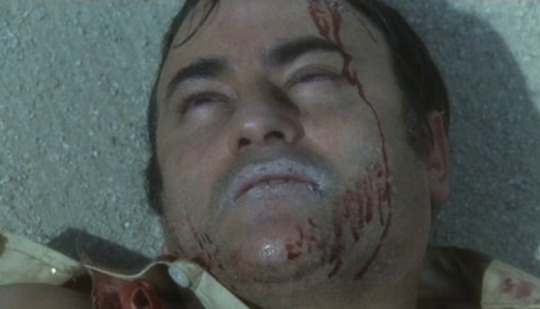
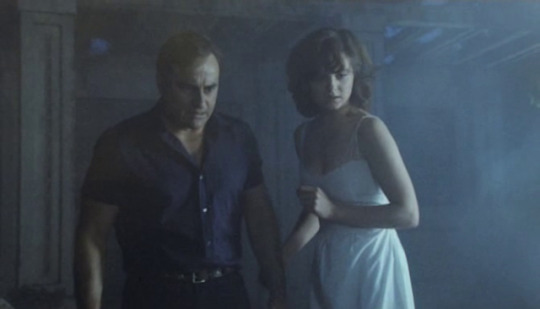



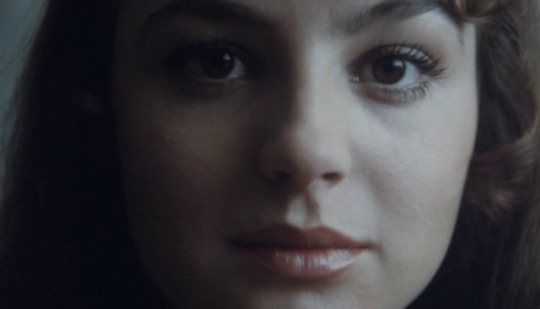
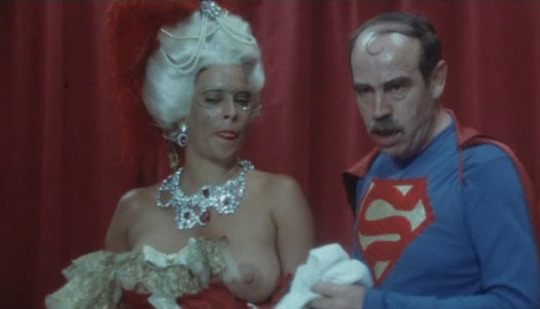

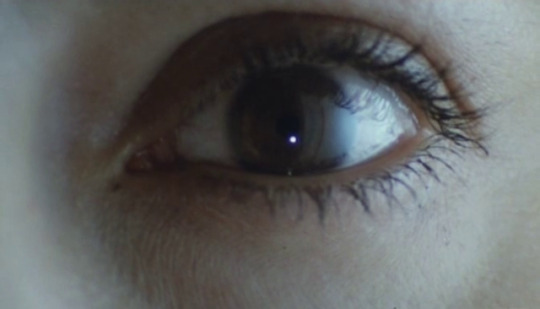
El carnaval de las bestias (Jacinto Molina, 1980).
#jacinto molina#Paul Naschy#azucena hernández#tito garcía#ricardo palacios#luis ciges#julia saly#silvia aguilar#mercedes marfil#rafael hernández#lautaro murúa#roxana dupré
5 notes
·
View notes
Photo
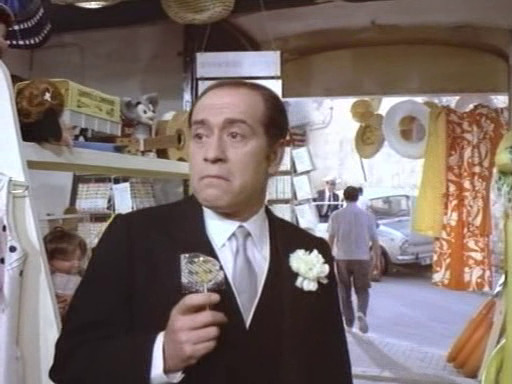




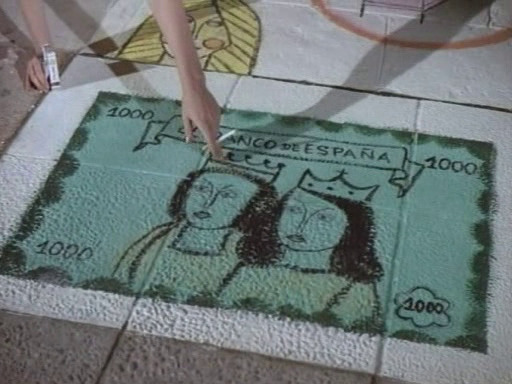
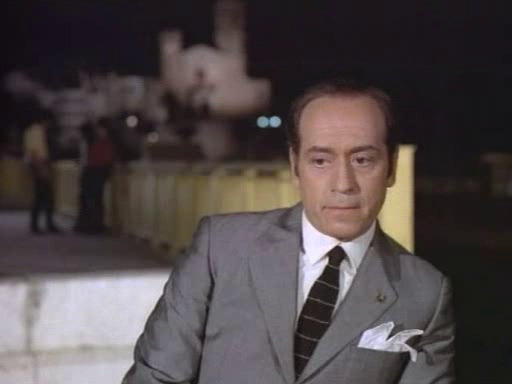

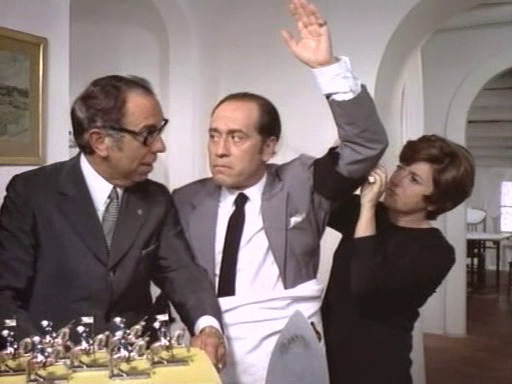
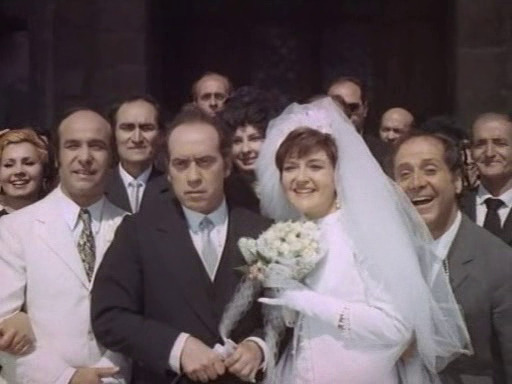
¡Vivan los novios! (Luis García Berlanga, 1970)
#Vivan los novios#¡Vivan los novios!#Long Live the Bride and Groom#1970#Films watched in 2022#cinco#Berlanga#Luis García Berlanga#luis garcia berlanga#José Luis López Vázquez#Laly Soldevila#José María Prada#Manuel Alexandre#Luis Ciges#Romy#wedding#comedy#marriage#death#black comedy#bath#hands#spain#jose luis lopez vazquez#kiss
69 notes
·
View notes
Photo

Today, the art of killing. If you've fought the bull well, you must kill it well. If not, it's a tragedy for both. The matador doesn't live up to his name, and the bull's bravery is betrayed.
Matador, Pedro Almodóvar (1986)
#Pedro Almodóvar#Jesús Ferrero#Assumpta Serna#Antonio Banderas#Nacho Martínez#Eva Cobo#Julieta Serrano#Chus Lampreave#Carmen Maura#Eusebio Poncela#Bibiana Fernández#Luis Ciges#Verónica Forqué#Ángel Luis Fernández#Bernardo Bonezzi#José Salcedo#1986
11 notes
·
View notes
Text
VENGEANCE OF THE ZOMBIES (1973, LA REBELIÓN DE LAS MUERTAS) – Episode 218 – Decades Of Horror 1970s
“In the name of Baron Samedi, in the name of the five ministers of the kingdom of Ife, and through the intercession of the Black Lords of the mountain, I order you, Gloria Irving, I order you to arise and obey me. Obey me!” The kingdom of Ife? Join your faithful Grue Crew – Doc Rotten, Bill Mulligan, Chad Hunt, and Jeff Mohr – as they check out their fourth Paul Naschy film – this one sans his frequent character, Waldemar Daninsky – Vengeance of the Zombies (1973, La rebelión de las muertas).
Decades of Horror 1970s
Episode 218 – Vengeance of the Zombies (1973)
Join the Crew on the Gruesome Magazine YouTube channel!
Subscribe today! And click the alert to get notified of new content!
https://youtube.com/gruesomemagazine
Decades of Horror 1970s is partnering with the WICKED HORROR TV CHANNEL (https://wickedhorrortv.com/) which now includes video episodes of the podcast and is available on Roku, AppleTV, Amazon FireTV, AndroidTV, and its online website across all OTT platforms, as well as mobile, tablet, and desktop.
An Indian mystic uses magical chants to raise women from the dead, then sends them out to perform revenge killings for him.
Directed by: León Klimovsky
Writing Credits: Paul Naschy (story & screenplay) (credited as Jacinto Molina)
Selected Cast:
Paul Naschy as Krisna / Kantaka / Satán
Romy as Elvire Irving (credited as Rommy)
Mirta Miller as Kala
María Kosty as Elsie (credited as Maria Kosti)
Aurora de Alba as Olivia Mortimer
Luis Ciges as MacMurdo (credited as Louis Ciges)
Pierre Besari as Ti Zachary
Antonio Pica as Supt. Hawkins
Víctor Barrera as Dr. Lawrence Radcliffe (as Vic Winner)
Elsa Zabala as Susan
Montserrat Julió as Flora (as Monserrat Julió)
Ramón Lillo as Basehart (as Ramon Lillo)
Norma Kastel as Gloria Irving (as Norma Kastell)
Ingrid Rabel as Muerta
Asunción Molero as Muerta (as Asuncion Molero)
Fernando Sánchez Polack as Augusto (credited as Fernando Sanchez-Polak & Fernando S. Polack)
Alfonso de la Vega as Absalon
Are you ready for another Paul Naschy extravaganza? The Grue-Crew tackles the often overlooked Spanish horror film, Vengeance of the Zombies (1973), featuring Naschy in three roles: the East Indian mystic, Krisna; the scarred, evil twin, Kantanka; and, Satán! The film is filled to the brim with voodoo zombies rising from the grave to kill at the orders of a mysterious hooded figure. But, why, why, do these zombies smile so much?! While not entirely successful, the film deserves to be seen, preferably without the theatrical red warning flashes. Roger Ebert called it the “dog of the week” on Sneak Previews upon its 1980 release, but the Grue Crew thinks that label is undeserved. What do you, dear Grue Believers, think? Let us know in the comments below.
At the time of this writing, Vengeance of the Zombies (1973) is available to stream from the Classic Horror Movie Channel, Wicked Horror TV, and Tubi. The film is available from Scream Factory as a standard format Blu-ray as part of The Paul Naschy Collection along with Horror Rises from the Tomb (1973), Blue Eyes of the Broken Doll (1974), Human Beasts (1980), and Night of the Werewolf (1981).
Gruesome Magazine’s Decades of Horror 1970s is part of the Decades of Horror two-week rotation with The Classic Era and the 1980s. In two weeks, the next episode, chosen by Jeff, will be Who Can Kill a Child? (1976, ¿Quién puede matar a un niño?), directed by Narciso Ibáñez Serrador. The Grue Crew have been on the hunt for this scarce, cult classic for years. What will they think?
We want to hear from you – the coolest, grooviest fans: comment on the site or email the Decades of Horror 1970s podcast hosts at [email protected].
Check out this episode!
0 notes
Text
SE VENDE UN TRANVIA
¿DE ESTELRICH O DE BERLANGA?
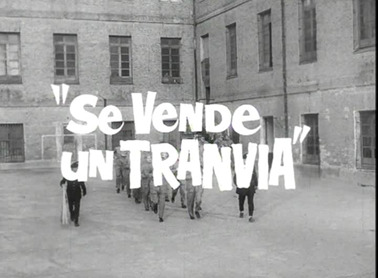

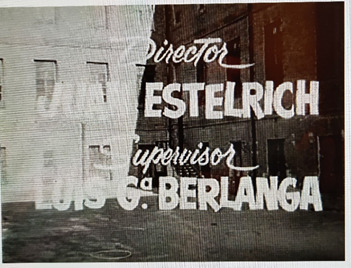

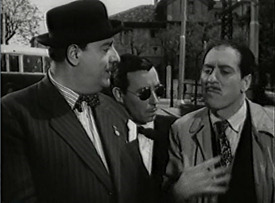

BERLANGA EN EL RODAJE
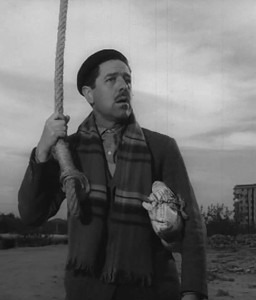
EL CAMEO DE BERLANGA
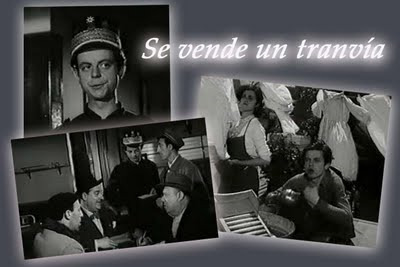

LA LÍNEA QUE NO EXISTÍA

Si tenéis oportunidad no dejéis de ver SE VENDE UN TRANVÍA (actualmente en FlixOlé), un genial mediometraje en el que se resume todo lo mejor de la comedia española y la picaresca de todas las épocas. No se puede en 30 minutos ofrecer una historia más divertida ni más crítica con la sociedad de aquellos años expresada en la dualidad entre el mundo rural y el urbano.
¿Quién es el autor de ese mediometraje? Pues no es de uno de los gurús del cine español. No es de Berlanga o de Neville, no es de Lazaga o de Saénz de Heredia. Es de un desconocido para la mayoría, un cineasta español al que hoy le dedicamos nuestro capítulo: JUAN ESTELRICH MARCH.
Bueno, al menos eso es lo que aparece en los créditos de la película. Muchos críticos y analistas otorgan la autoría de este mediometraje a Luis García Berlanga. Vamos a bucear en la historia de la película a ver si obtenemos algún dato clarificador: Juan Estelrich (Barcelona 1927) tuvo un largo recorrido en el cine español, aunque escaso en los créditos como vamos a tener ocasión de ver (no confundir con su hijo del mismo nombre y también director de películas como La vida láctea o Pintadas). Nacido en el seno de una familia barcelonesa relacionada con la política (la Lliga) vivió y desarrolló su vida profesional en Madrid donde murió en 1993. En muchas de las películas que se rodaron en España en los años 50 y 60 del siglo pasado aparece el nombre de Juan Estelrich como ayudante de dirección. Trabajó a las órdenes de directores como Orson Welles, Anthony Mann, Juan Antonio Bardem o Luís García Berlanga. También participó como director de producción en cintas de Luís Buñuel y Fernando Fernán Gómez.
Buen amigo de Rafael Azcona escribió junto a él un guion que terminó siendo el único largometraje que dirigió nuestro personaje de hoy: El anacoreta en 1976, que recibió el Oso de Plata en el Festival de Berlín por la interpretación de Fernando Fernán Gómez.
En 1959 Berlanga, Azcona y Estelrich bajo los auspicios de Estudios Moro, la agencia de publicidad hegemónica del cine español y de la televisión por esos años, plantean realizar una serie de 36 películas de 30 minutos para su difusión no solo en España sino en los países latinoamericanos con el nombre de Los Picaros. Se rueda el primer episodio con guion de Berlanga y Azcona con dirección de Estelrich con el título Se vende un tranvía y parece que a los estudios Moro les resultó excesivamente localista y sin viso de triunfo en Hispanoamérica por lo que la serie es cancelada. No obstante, este primer capítulo se le da a visionar a los directivos de Televisión Española que se escandalizan ante lo que ven, interviene la censura y la película, sin difusión comercial alguna, es retirada y ocultada por 20 años.
Hasta aquí la pequeña historia de la producción de Se vende un tranvía. Pero subamos al tranvía para conocer sus interioridades.
La sinopsis argumental es diáfana: un individuo procedente de la España rural llega a Madrid y exhibe en un bar una cartera con abundancia de billetes. Un taimado de la capital lo observa y pone en marcha a su equipo de timadores con un plan ya ensayado: le proponen al rústico de provincias un gran negocio que consiste en comprar un tranvía municipal (en concreto el de la línea 137) para lo que ponen en marcha todo un escenario de personajes que se suceden ante el pueblerino, al que se le hacen los ojos chiribitas con la perspectiva de enormes ganancias…
La película contó con un buen número de actores que se consolidarían en los años siguientes en el cine español: José Luis López Vázquez, María Luisa Ponte, Antonio García Quijada, Chus Lampreave, José Orjas, Pedro Bertrán, Luis Ciges y hasta con el inefable José María Tasso y su flequillo.
Con la distancia de los años la película ha sido analizada y algunos críticos la han insertado como una comedia derivada del neorrealismo italiano; también son muchos los que niegan este aspecto y la adscriben a la pura comedia española en la línea de Neville o Berlanga. Hay un curioso paralelismo con Rufufú, al situar el centro logístico de los timadores en una azotea al igual que Monicelli hizo con sus simpáticos ladrones un par de años antes.
La película que a ojos de hoy día puede resultar una comedia completamente “blanca” y casi costumbrista, era en aquellos años tremendamente agresiva para los componentes morales de la dictadura: aparición de varias monjas, uso de una iglesia como centro de un negocio comercial (la imagen de Lampreave, disfrazada de devota e intentando reventar el cepillo, y la de López Vázquez haciendo un gesto raro en lugar de santiguarse, debieron ser las que colmaron el vaso), fugaz aparición de un homosexual en una secuencia que pasa muy desapercibida y sobre todo la presunción de la figura del aldeano/codicioso frente al capitalino/timador (curiosamente Los tramposos de Pedro Lazaga es del mismo año y pasó la censura sin problemas aunque la secuencia del timo de la estampita es más superficial que el tinglado de Se vende… y todo en ella es menos vitriólico socialmente). La dicotomía “listo” de capital versus “cateto” de pueblo se resuelve moralmente al final igualándolos.
El resultado es una comedia que después de 60 años permanece fresca, con un ritmo adecuado y con una carga de profundidad a la sociedad de la época que va mucho más allá de las superficiales señas anticlericales. En estas señales es donde algunos críticos hacen hincapié en la autoría de Berlanga como director y no de Estelrich. Desde luego es innegable que el guion es propio de Azcona y Berlanga, que hasta en un diálogo se refiere al material “austrohúngaro” del que esta hecho el tranvía y que el pueblerino toma como “australiano” y ya sabemos que esto era un signo de identidad en todas las películas del director valenciano. Otro punto llamativo es la aparición en los créditos de una figura no habitual. Se indica en los mismos que el director es Juan Estelrich y que Berlanga es el Supervisor, una figura de la que realmente desconozco su funcionalidad en el mundo del cine.
En todo caso ¿por qué no la firmó Berlanga? Hay que remontarse a dos años antes cuando Berlanga rueda Los Jueves milagro. El valenciano quedó tan harto y tan “quemado” de la presencia in situ de la censura en forma de sacerdote (el padre Garau) que el propio director con su retranca habitual pidió a la productora que apareciese en los créditos el sacerdote citado como parte también del equipo de guionistas dada la cantidad de modificaciones que había obligado a realizar en el guion original. Berlanga estuvo varios años alejado de los platós hasta que en 1961 volvió para realizar nada menos que Plácido (en la que el propio Estelrich fue ayudante de dirección). Es posible que en aquél 1959 estuviese viviendo una especie de “año sabático” y que no quisiera, por diferentes motivos, ser el elemento central de la película y la serie que se iba a poner en marcha. De lo que no hay duda es de su participación en el guion, su presencia en el rodaje y su aparición en una breve escena.
De lo que tampoco hay duda es que Jun Estelrich era un completo hombre de cine y su nombre, en mayor o menor grado, forma parte de la mejor historia del cine español. Alejado del cine los últimos años falleció en Madrid en 1993 y su amigo Manuel Vicent publicó en El País el 12/8/1993 un artículo (Brindis por Juan Estelrich) del que recojo algunos párrafos:
“Acaba de morir en medio de la soledad de agosto, en un Madrid sin alma. Los amigos tenemos que agradecerle lo mucho que nos hemos reído con él. Era el representante del humor catalán en la meseta, lo trabajaba en ese punto donde la inteligencia se confunde con el sarcasmo, y desde la altura de la ebriedad, en las noches dulces de Bocaccio, lo utilizaba como látigo, a la manera de Rosiñol, que fue rey del bar La Punyalada, en la Barcelona de principios de siglo. Juan Estelrich tenía algo de caballero velloso, inactual, gigante irónico que en las tertulias del café Gijón dejó lo mejor de su talento gratuitamente a media tarde cuando el alcohol todavía no lo cabalgaba. (…) Le vi por última vez sentado en el café una tarde de final de julio, y en su mirada llena de tristeza aparecía el signo de la derrota, aunque a veces sonreía con una displicencia infinita. Miraba por el ventanal de una forma perdida. Tuvo la elegancia de no dejarse compadecer, de modo que la muerte se ha desprendido sobre él como una fruta natural cuando ya estaba en su punto. Y a los amigos nos ha dejado el recuerdo de su inteligencia, de las risas compartidas, de la travesía de tantas noches pletóricas compartiendo los mismos restos del naufragio. Juan también lo decía: "Si juegas al póquer borracho, corres el riesgo de que te quiten no sólo el dinero, sino también la borrachera". Mi amigo acaba de beberse el último gin tonic con la Dama, y desde este lado de la tapia levanto mi copa por él”.
Volver a ver hoy Se vende un tranvía, independientemente de quien fuese su realizador, es un disfrute en estos tiempos ominosos. Una última curiosidad: la línea de tranvía 137 no existió jamás en Madrid y no sé el motivo de asignarle ese número, pero conociendo a Azcona y Berlanga seguro que algo pretenderían decir…
25/2/2021
4 notes
·
View notes
Video
youtube
MATADOR (1986)
Grade: C
Not my fav Pedro Almodóvar film. The plot doesn't do much for me. The ending as well was kind of a bore.
#Matador#1986#C#Drama Films#Foreign Films#Thriller Films#Pedro Almodóvar#Bull Fighting#Assumpta Serna#Antonio Banderas#Nacho Martínez#Eva Cobo#Julieta Serrano#Chus Lampreave#Carmen Maura#Eusebio Poncela#Bibiana Fernández#Luis Ciges
0 notes